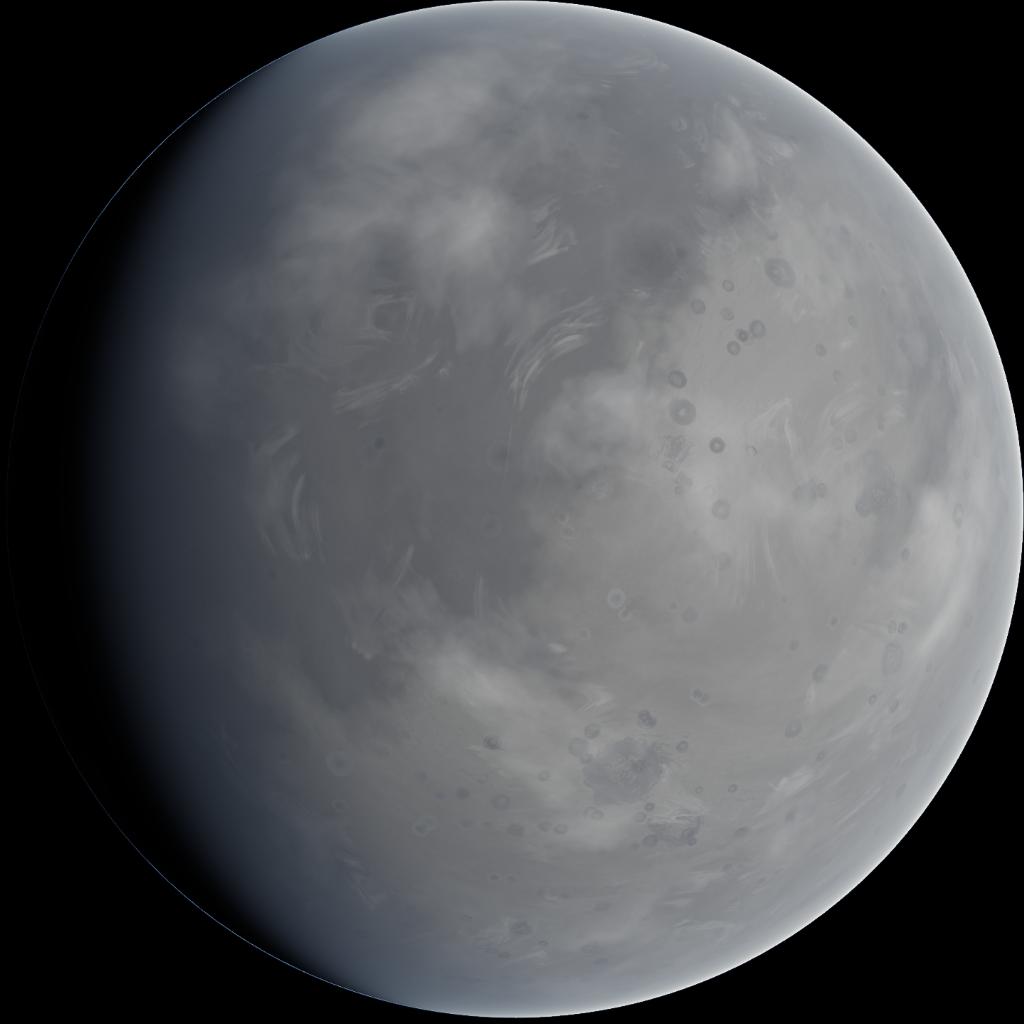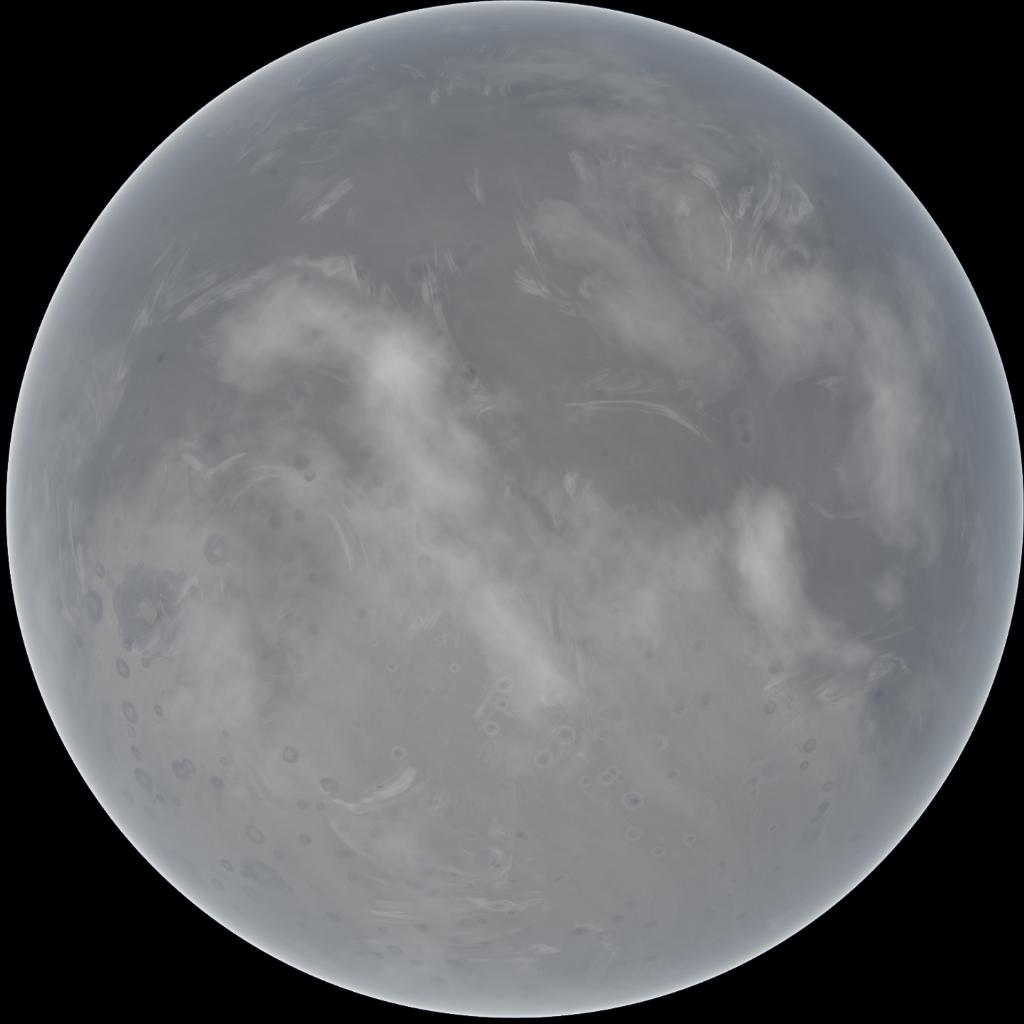Anax otherwise known as Tau Ceti h is the second innermost planet in the Tau Ceti star system. Anax is a super-earth planet and is too close to its star to have liquid water on its surface, however clouds still form in the higher and cooler parts of the atmosphere. The atmosphere consists of nitrogen, carbon dioxide, Ammonia, and water vapor. Anax has a weak magnetic field and very little tectonic activity, causing the surface to be very flat and smooth with many craters visible. The planet has areas of darker igneous rocks that remain after the formation of the planet.
GENERAL INFO
- Created On: Windows
- Game Version: 1.2.212.0
CHARACTERISTICS
- Radius: 11,678 km
- Sea Level: None
- Surface Gravity: 17.0 m/s
- Rotational Period: N/A
- Escape Velocity: 19.90 km/s
- Mass: 3.47E+25kg
Atmosphere
- Height: 111 km
- Scale Height: 8,056 m
- Surface Air Density: 0.919 kg/m3
- Surface Temperature: 465 K
EQUIRECTANGULAR MAP

3 Comments
- Log in to leave a comment
-
11.5k deepfriedfrenchtoast+1 1.7 years ago
@Hyperant Im using this website to see exoplanets and it dosent list Tau Ceti B, it also doesnt appear in Space Engine so idk.
-
20.5k Tallisar+1 1.7 years ago
How is it Tau Ceti "H" if it is the second innermost planet? Shouldn't it be "B"?




@SeeyaTheFurry i can confirm this too
i was initially surprised by the Tau Ceti system with the weird designations but then i learned the way it works and now i sometimes use it in my own systems too
one thing to also note is that "A" (capital) is used for the star itself, and the first discovered exoplanet would be "b" (lowercase) and then the following ones too
with multi-star systems it's a bit different, for example Alpha Centauri has the two main "A" and "B" stars (there's also Proxima as "C" but we'll ignore it for now since it's small and far away enough to not have a major effect on the entire trinary system afaik), in that case the exoplanet designations remain the same, so you can have something like "Alpha Centauri Bb" (is actually a hypothetical planet irl) while circumbinary orbits (around both stars, i.e. orbit center is the stars' barycenter) are usually "(AB) b" or similar from what i've seen